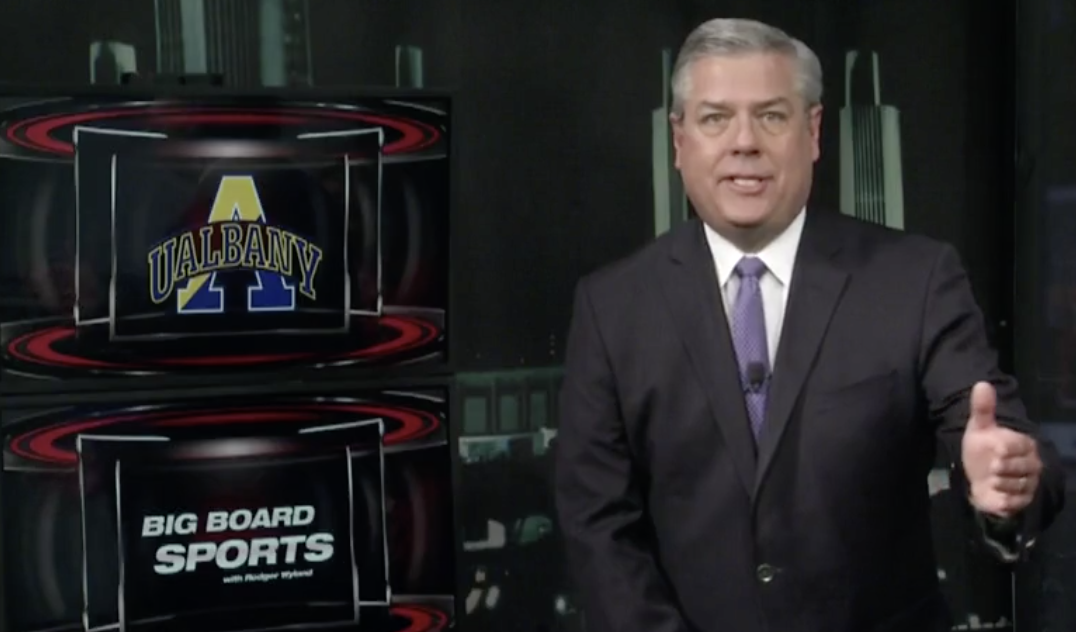Rossiter: Sometimes the truth hurts
Like it or not, Pete Dougherty had a point
Siena finally hired a new coach after Jimmy Patsos allegedly verbally assaulted a team manager with OCD and resigned. But the drama is far from over in local media circles.
On Thursday, Times Union sports TV/radio columnist Pete Dougherty called News Channel 13’s Rodger Wyland out for jumping the gun on a story he later got right. Wyland, his wife (reader of WNYT’s midday newscast) and Twitter took turns bashing Dougherty’s column as “sour grapes.”
On Friday, it was Wyland’s 104.5 “The Team” coworkers turn to beat up on the veteran newspapermen. During a segment called “Socially Awkward Media” afternoon drivetime host Tom Goslowski, in true reactionary sports talk radio fashion, called the column “nonsense.” After shaming listeners who questioned Wyland, co-host Jeff Levack played the role of the pot in the old saying of one kitchen appliance calling its stove neighbor black.
“It was way too snarky, it was way too rude,” Levack said.
The inconvenient truth? Dougherty offered an unpopular, yet in the rigid confines of journalism ethics, accurate objection to Wyland’s style of reporting unverified information as sworn fact. By and large, most newsrooms would shy away from this brand of rumor mill reporting, especially without sources willing to go on the record. At the same time, however, news organizations are typically free and autonomous in their individual ethics and standards—a conspiracy story in the National Enquirer about a monster living in the Hudson River likely would not meet the editorial standards of let’s say, The New York Times.
Reading between the column lines offers a much more black and white ethical quagmire for Wyland, WNYT, and “The Team.” While bringing up one of Wyland’s recent scoops (Joe Cremo and David Nichols decision to transfer out of the University at Albany) Dougherty shined a light on Wyland’s paid contract with the school for the play-by-play calling of its football and basketball games.
Essentially, Wyland is paid by an organization he has to cover on a regular basis as a TV reporter. This “fox guarding the hen house” arrangement is the textbook definition of a conflict of interest.
To Wyland’s credit, this behavior of playing for both teams has served him quite well in the market. He is by far the biggest face of local sports and is the only area media member to have a daily platform across all three traditional mediums: print, radio, and TV. And to be fair, this type of double dipping in coverage was, at one time, fairly common in local television sports reporting.
Everyone has to put food on their tables and Wyland is in no way a sellout or hack. Some stiff-nosed journalists would suggest Wyland divulge of either his TV gig or play-by-play coverage of the Great Danes. Pure objectivity, in this case, would be hard to manufacture, but a little transparency could go a long way.
The casual viewer of Wyland’s evening sportscasts probably doesn’t know of his arrangement with UAlbany, and the ones that do likely don’t know he gets paid by the school. If before any report on UAlbany the audience was clued in with some kind of a disclaimer, it would be much less problematic. This could even be achieved by some kind of message at the bottom of the screen.
Sometimes writing the critical column is unpopular, but the profession is frankly stronger when we can look inwards and report (analyze) each other. It is not a matter of sour grapes, but one of ethics—the cornerstone of journalism.
Disclosure: Dylan Rossiter is a former Times Union intern. In 2017 he was interviewed by Pete Dougherty for a story.



